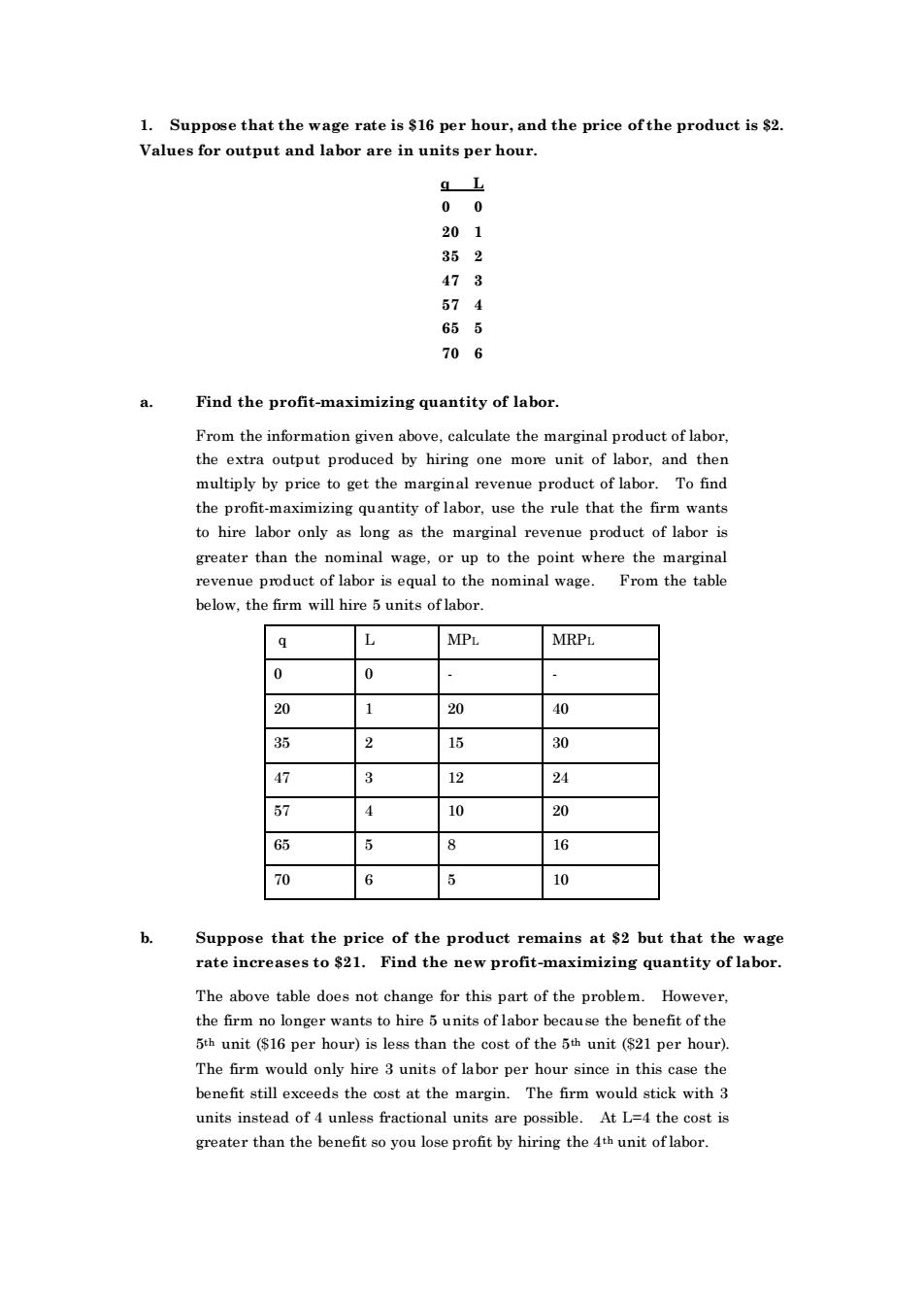正在加载图片...

1.Suppose that the wage rate is $16 per hour,and the price ofthe product is $2. Values for output and labor are in units per hour. 201 352 473 574 655 6 Find the profit-maximizing quantity of labor. From the information given above,calculate the marginal product of labor the extra output produced by hiring one more unit of labor,and then multiply by price to get the marginal revenu e product of labor.To find the profit-maximizing quantity of labor,use the rule that thefirm wante to hire labor only as long as the marginal revenue product of labor is greater than the nominal wage.or up to the point where the marginal revenue product of labor is equal to the nominal wage. From the table below,the firm will hire 5 units oflabor L MPL MRPL 0 20 40 2 6 动 47 3 12 24 57 10 20 65 16 70 6 10 Supp se that the rice of the produet remains at $2 but that the wag rate increases to $21 1.Find the new profit-maximizing quantity of labo The above table does not change for this part of the problem. However the firm no longer wants to hire 5 units of labor because the benefit of the 5th unit ($16 per hour)is less than the cost of the 5t unit ($21 per hour). The firm would only hire 3 units of labor per hour since in this case the benefit still exceeds the ost at the margin The6rm would stick with 3 units instead of 4 unless fractional units are possible.At L=4 the cost is greater than the benefit so you lose profit by hiring the 4th unit of labor. 1. Suppose that the wage rate is $16 per hour, and the price of the product is $2. Values for output and labor are in units per hour. q L 0 0 20 1 35 2 47 3 57 4 65 5 70 6 a. Find the profit-maximizing quantity of labor. From the information given above, calculate the marginal product of labor, the extra output produced by hiring one more unit of labor, and then multiply by price to get the marginal revenue product of labor. To find the profit-maximizing quantity of labor, use the rule that the firm wants to hire labor only as long as the marginal revenue product of labor is greater than the nominal wage, or up to the point where the marginal revenue product of labor is equal to the nominal wage. From the table below, the firm will hire 5 units of labor. q L MPL MRPL 0 0 - - 20 1 20 40 35 2 15 30 47 3 12 24 57 4 10 20 65 5 8 16 70 6 5 10 b. Suppose that the price of the product remains at $2 but that the wage rate increases to $21. Find the new profit -maximizing quantity of labor. The above table does not change for this part of the problem. However, the firm no longer wants to hire 5 units of labor because the benefit of the 5th unit ($16 per hour) is less than the cost of the 5th unit ($21 per hour). The firm would only hire 3 units of labor per hour since in this case the benefit still exceeds the cost at the margin. The firm would stick with 3 units instead of 4 unless fractional units are possible. At L=4 the cost is greater than the benefit so you lose profit by hiring the 4th unit of labor